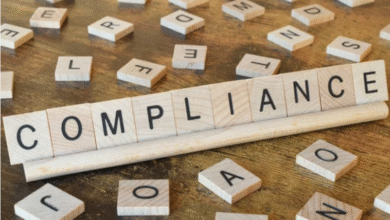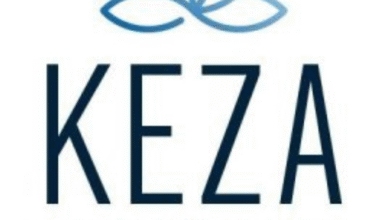Best Sustainability Reporting Software: A Complete Guide for Businesses
In today’s fast-evolving business landscape, sustainability is no longer a choice—it’s a responsibility. Organizations across industries are under increasing pressure from stakeholders, investors, regulators, and consumers to demonstrate how they are reducing environmental impact, maintaining ethical practices, and creating long-term value. To meet these demands, businesses are turning to sustainability reporting software. But with so many options available, how do you choose the best sustainability reporting software for your organization?
Why Sustainability Reporting Software Matters
Gone are the days when sustainability data was managed through spreadsheets and manual reporting. Companies now require robust systems that can track, analyze, and present sustainability performance in alignment with international standards such as GRI (Global Reporting Initiative), SASB (Sustainability Accounting Standards Board), CDP (Carbon Disclosure Project), and the UN Sustainable Development Goals (SDGs).
The best sustainability reporting software helps businesses:
-
Collect accurate data on carbon emissions, water usage, energy consumption, waste, and supply chain sustainability.
-
Comply with regulations and reporting frameworks to avoid penalties and ensure transparency.
-
Enhance brand reputation by showcasing corporate responsibility.
-
Drive operational efficiency by identifying areas for cost savings and resource optimization.
-
Build trust with stakeholders through verifiable, audit-ready sustainability data.
Key Features to Look for in the Best Sustainability Reporting Software
When choosing the right platform, businesses should evaluate software based on features that align with their sustainability goals. Some must-have features include:
-
Comprehensive Data Management – The ability to capture data across multiple facilities, business units, and geographies.
-
Integration Capabilities – Seamless integration with ERP systems, HR platforms, and supply chain management tools.
-
Customizable Dashboards – Interactive dashboards that allow teams to visualize performance in real-time.
-
Compliance and Framework Support – Built-in templates for GRI, SASB, CDP, TCFD, and other sustainability standards.
-
Carbon Accounting & ESG Metrics – Tools to track greenhouse gas (GHG) emissions, energy efficiency, and social governance initiatives.
-
Audit-Ready Reports – Automated reporting features to ensure accuracy and transparency for stakeholders and regulators.
-
User-Friendly Interface – Easy navigation for both sustainability professionals and non-technical staff.
Top Benefits of Using the Best Sustainability Reporting Software
-
Improved Accuracy – Automation reduces human error and ensures reliable reporting.
-
Time and Cost Savings – Eliminates repetitive manual tasks, freeing teams to focus on strategic sustainability initiatives.
-
Enhanced Decision-Making – Real-time insights empower businesses to act quickly on environmental risks and opportunities.
-
Investor Confidence – Transparent sustainability reporting attracts environmentally conscious investors.
-
Competitive Advantage – Businesses demonstrating measurable sustainability progress stand out in the market.
How to Choose the Best Sustainability Reporting Software for Your Business
Selecting the right platform depends on your company’s size, industry, and sustainability priorities. Here’s a simple framework to guide your decision:
-
Assess Your Needs – Determine which ESG metrics and reporting frameworks are most relevant to your organization.
-
Evaluate Scalability – Ensure the software can grow with your business as sustainability reporting requirements expand.
-
Check Compliance Features – Confirm that the software supports global sustainability frameworks.
-
Consider User Experience – Choose a platform with an intuitive interface to encourage adoption across departments.
-
Review Customer Support – Strong vendor support and training are essential for smooth implementation.
-
Look for Case Studies – See how other organizations in your industry have benefited from the platform.
Future of Sustainability Reporting Software
As sustainability becomes central to business strategy, reporting software will continue to evolve. Artificial intelligence (AI) and machine learning (ML) are increasingly being integrated to provide predictive insights, automate data collection, and detect anomalies. Blockchain is also emerging as a tool for secure and transparent ESG reporting. Companies that invest in the best sustainability reporting software today are positioning themselves for success in a future where sustainability is inseparable from profitability.
Final Thoughts
The best sustainability reporting software is more than just a compliance tool—it’s a strategic asset that empowers businesses to operate responsibly, strengthen stakeholder trust, and achieve long-term growth. Whether you’re a multinational corporation or a growing enterprise, adopting the right solution ensures your sustainability efforts are measurable, transparent, and impactful.
By carefully evaluating features, scalability, and integration capabilities, organizations can choose a platform that not only meets regulatory demands but also drives meaningful progress toward a sustainable future.
In today’s digital-first economy, businesses generate massive volumes of data daily from multiple sources such as websites, social media, applications, CRMs, email campaigns, customer interactions, and IoT devices. Managing this data efficiently, organizing it into actionable insights, and using it to enhance customer experiences has become a top priority. This is where a Data Management Platform (DMP) comes into the picture. A DMP is a centralized system that collects, stores, organizes, and analyzes data to help businesses understand their customers better and run more targeted, data-driven marketing campaigns. By consolidating first-party, second-party, and third-party data, a DMP allows businesses to create accurate audience segments, personalize experiences, and maximize ROI from marketing efforts.
What is a Data Management Platform
A Data Management Platform is essentially a powerful technology that acts as a data warehouse for marketing and advertising. It aggregates customer data from online and offline sources, analyzes user behavior, and enables organizations to activate this data across various digital channels. A DMP is not limited to just data storage; it is a strategic platform that transforms raw information into structured profiles, which marketers and business leaders can use for audience targeting, personalization, and optimization. It serves as the backbone for programmatic advertising, customer journey mapping, and omni-channel marketing strategies.
Key Components of a Data Management Platform
To understand how a DMP functions, it’s important to break down its core components:
1. Data Collection Layer: A DMP collects information from multiple sources like websites, CRM tools, social media platforms, POS systems, and ad exchanges. This layer ensures both structured and unstructured data are captured.
2. Data Organization and Integration: Once collected, the data is cleaned, deduplicated, and structured into a standardized format. This ensures consistent and reliable information across systems.
3. Audience Segmentation: The DMP categorizes users into audience segments based on demographics, behaviors, location, device usage, and purchase history. These segments help businesses target ads effectively.
4. Analytics and Insights: A robust DMP provides reporting dashboards and insights that allow businesses to measure campaign performance, audience behavior, and data value.
5. Data Activation: This is the final step where data-driven segments are deployed across marketing channels like display ads, social media, email, and content personalization engines.




